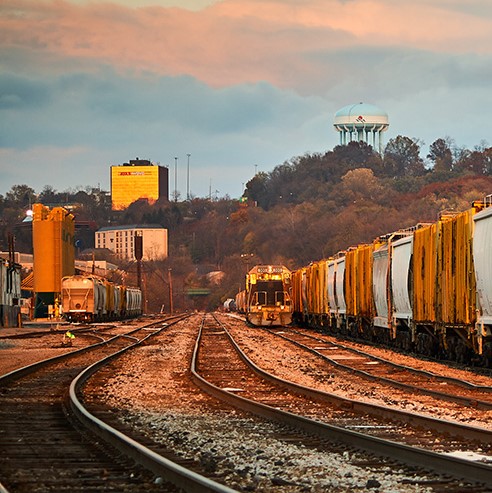Put simply, railcar storage is the option to temporarily take operable cars out of service for a specified period of time. A stored car, which may or may not be empty, resides at a railcar storage facility. These large facilities are comprised of miles and miles of track, with some facilities large enough to store entire unit trains.
There are many aspects of storage that need to be considered before the railcars can be removed from service.
1. Storage Fees.
Railcar storage fees are typically charged on a “per car, per day” basis, with additional fees for switching or other services. Whether the car is empty, loaded, or partially loaded may also influence pricing. Location can also affect storage pricing – preferred locations often cost more per car/per day due to the advantage of being well-situated geographically.
2. HazMat Requirements.
All types of railcars can be stored, including cars that move hazardous materials. But not all facilities may accept them or be equipped to do so.
3. Length of Time in Storage.
Railcar storage can be short-term or long-term, which can cause variation in rates as service providers may choose to charge daily, monthly, or annually. One of the most important goals of a storage facility is quick storage access, meaning the car can be returned back into service in the shortest amount of time possible once requested by the customer. However, sometimes the car will need to be stored for a long period of time, which will require a different type of storage solution.
4. Finding a Storage Provider.
Much like transloading facilities, railcar storage facilities are strategically located with proximity to railway interchanges or terminals. When finding a storage provider, location is key. Choosing a facility that interchanges with multiple railroads is beneficial because it provides diverse options once a car is removed from storage.
5. Security.
Different facilities offer varying levels of security, particularly for those storing hazardous material cars. Security may include lighting, fences, or even security guards.
6. Services Provided.
A railcar storage facility may offer mobile repair, cleaning, switching, transloading, scrapping, etc. It is advantageous for storage facilities to offer these services to remain competitive.
7. Safety.
Safety is a significant concern when selecting a service provider. Rail equipment can pose a threat to the health and safety of workers, communities, the environment, and the equipment itself. Federal and industry regulations are in place to minimize the incidence and magnitude of such dangers. This is particularly important when considering cars carrying hazardous materials.
8. Storage Alternatives.
When faced with the option of spending money to move empty cars, owners typically seek alternative solutions to avoid incurring extra costs. The alternatives to railcar storage include keeping an empty car in service or scrapping the car entirely. However, these are not attractive options for car owners. Continuing to move a car unnecessarily can be expensive and causes wear and tear on the car. Scrapping (or destroying) a car removes it from service permanently. With storage, the car can be pulled back into service when it is needed again.
The Commtrex Exchange simplifies finding a railcar storage provider by highlighting key details such as location, railroads with which the facility interchanges, and additional services offered. Users can easily compare locations side-by-side to choose the best storage option.
